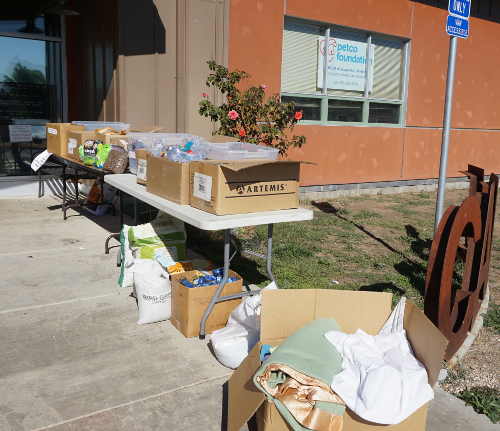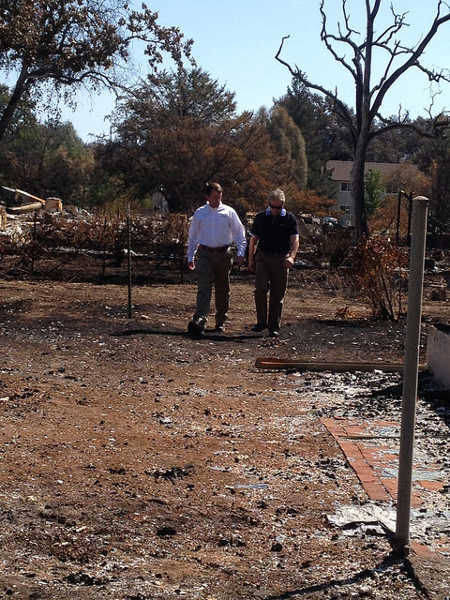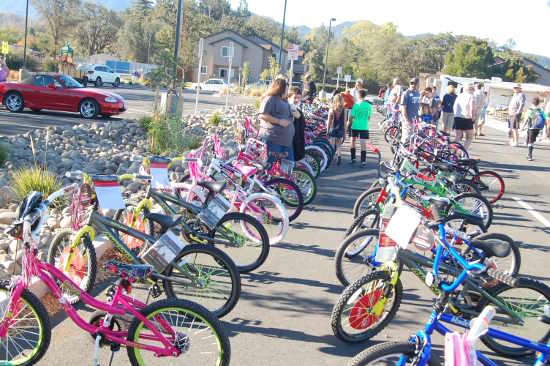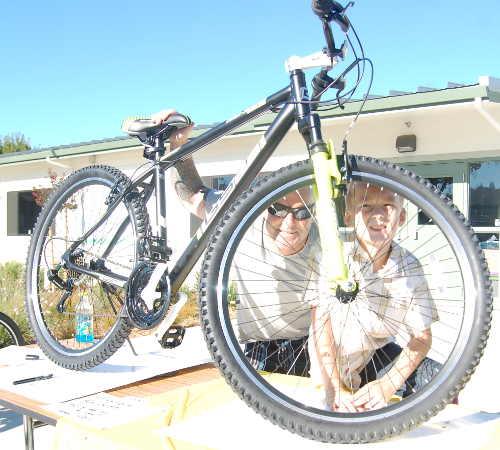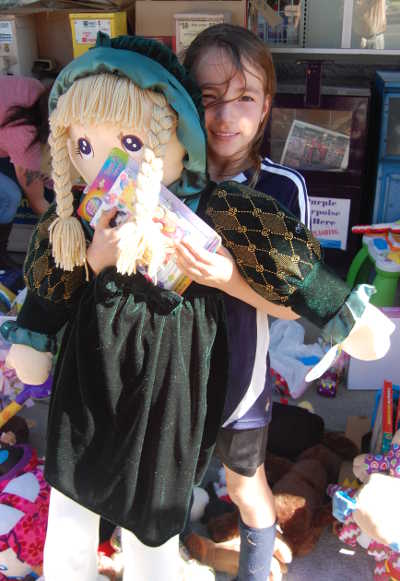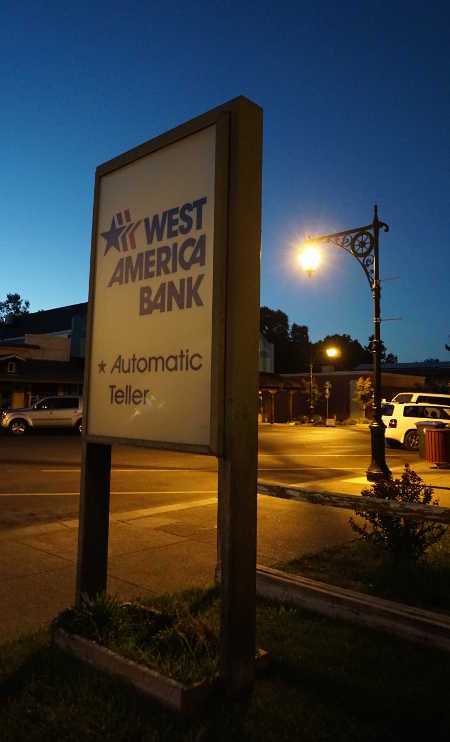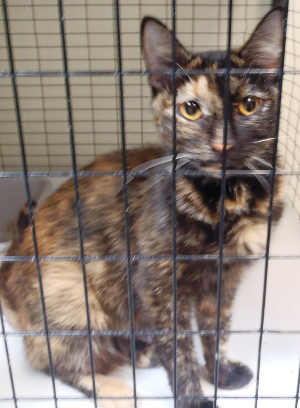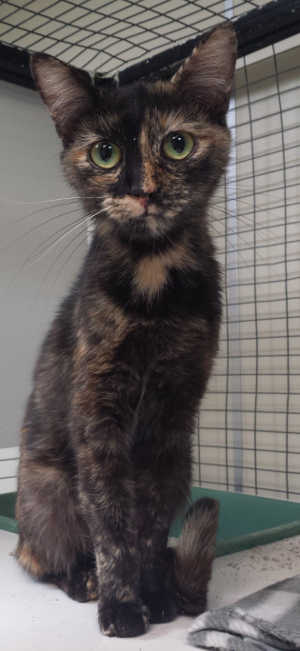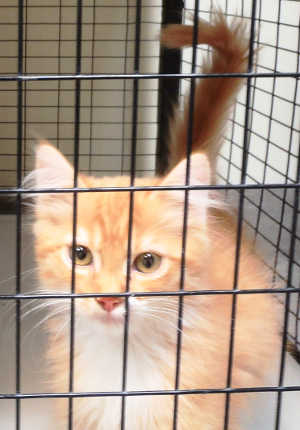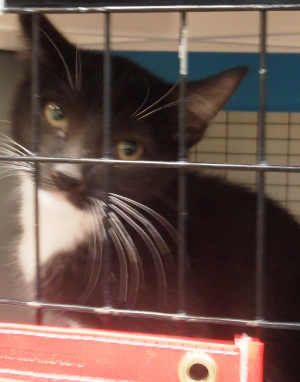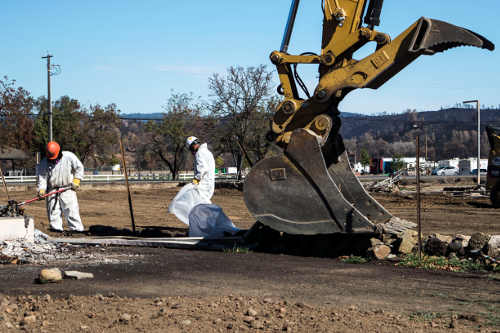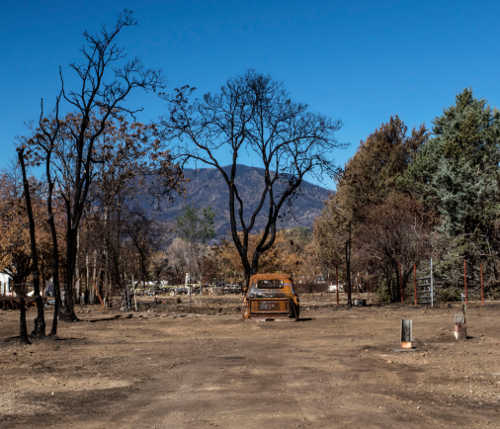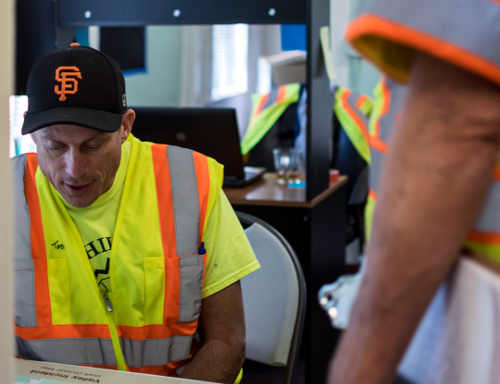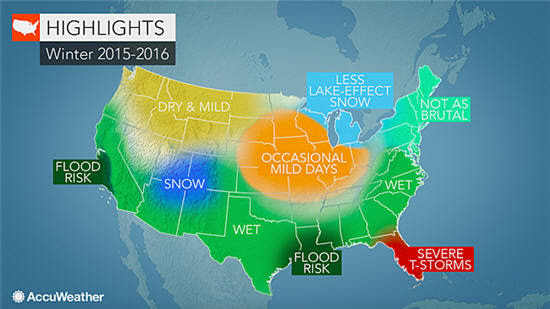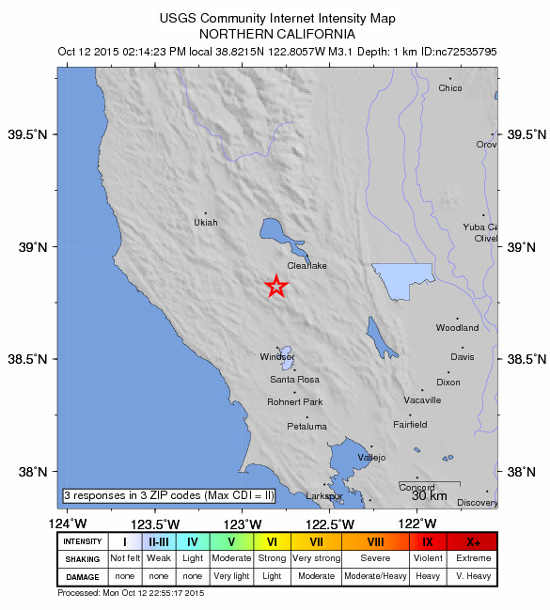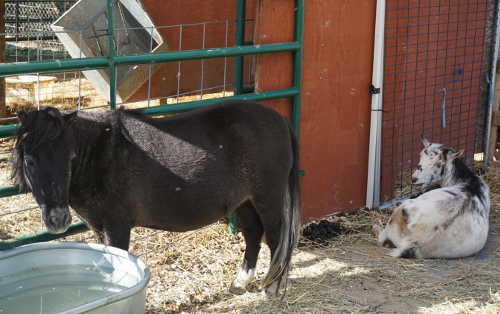
LAKE COUNTY, Calif. – One of the many truths to emerge out of the Valley fire's ashes is that Lake County, its people and its animals have many friends.
Those friends came from all over – from people in other Lake County communities, from neighboring counties and other areas around the region and the state, the rest of the nation and even Canada – in the effort to rescue, care for and shelter animals displaced and injured by the 76,067-acre fire, which was fully contained on Oct. 6.
“When this first hit, resources were thin,” said Lake County Animal Care and Control Director Bill Davidson, whose staff and volunteers had only completed their work to respond to the Rocky and Jerusalem fires a few weeks earlier when the Valley fire broke out.
Davidson said he began calling everyone he could think of, and within a short time groups like the ASPCA, North Valley Animal Disaster Group, Marin Humane Society, Napa Humane Society, animal control officials in neighboring counties and a variety of groups and private entities – like Cole Creek Equestrian Center and Gaddy Shack Ranch – from around the region responded to offer assistance, donations, boarding and more.
Davidson estimated that about three dozen animals – including those at UC Davis Veterinary School, in Sonoma County and at Lake County Animal Care and Control – are still waiting to be reunited with their families.
“My main concern in this whole thing is to keep track of the animals,” he said.
Davidson said he originally had planned to hold fire victims until Oct. 17 before offering them for adoption, and would look to other agencies with space for an additional 10 days before making them available for adoption or rehoming.
However, he told Lake County News that because space at the shelter is not now an issue, all animal fire victims are being held through Oct. 28, and then if unclaimed at that time, they will be available for adoption.
Davidson indicated that the organizations currently caring for animals have indicated they will rehome any animals that end up being unclaimed.
As for the shelter, he said he doesn't expect any problems finding any unclaimed animals homes, with many people already expressing a desire to give homes to such animals.
Wine Country Animal Lovers Board President Pam Ingalls emphasized that those animals who remain unclaimed are not going to be euthanized. Rather, she said if Lake County ends up with many of those animals needing homes, there are many rescue groups that will step up.
“I know Bill is doing as good a job as he possibly can to protect those animals,” Ingalls said.
The animals waiting to go home are a fraction of the thousands of animals that have been evacuated and cared for since the 76,076-acre Valley fire broke out on Sept. 12.
One of Animal Care and Control's key partners in the response, the ASPCA, compiled statistics that gives a picture of the fire response's magnitude.
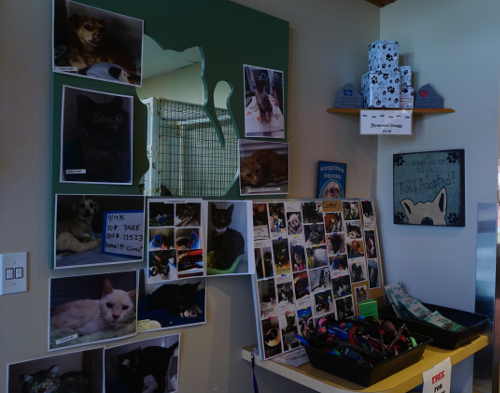
From Sept. 14 through Sept. 25, Lake County Animal Care and Control – assisted by its many partners – took approximately 674 requests for assistance from communities including Cobb (258) Hidden Valley Lake (270), Kelseyville (18), Lower Lake (44), Middletown (77), with seven requests coming from unknown areas, the data showed.
Based on those nearly 700 requests, Animal Care and Control and its partners cared for 3,396 animals, a number which Davidson said doesn't include the animals that were sheltered in place and visited multiple times for the purposes of feeding and watering them.
The ASPCA tally of animals assisted during the Valley fire included 901 cats; 364 dogs; 235 horses and donkeys; 143 cows; a mix of 474 goats, cows, sheep, alpacas, llamas, emus, camels and pigs; 1,272 chickens, ducks, turkeys and other avians; 67 rabbits, chinchillas, hamsters, rats, mice and ferrets; 30 turtles, fish, lizards and snakes; and 12 animals whose species were not specified.
“To me that reflects a tremendous effort at the county level,” said Dr. Dick Green, the senior director of Disaster Response for the ASPCA’s Field Investigations and Response team.
Animal Care and Control is continuing to post animals found during the fire on its Facebook page and Web site, with a little gallery of photos of injured animals in the care of cooperating rescue groups posted in the lobby at the shelter at 4949 Helbush in Lakeport.
He said a separate Web site, www.valleyfireanimals.com , is working to reunite pets and their families. At the same time, a number of Valley fire-related animal pages have been created on Facebook.
Despite all of these efforts, Davidson – who has seen the tragedy of the fire up close – said that for some people, when it comes to what happened to their animals, “It's sad to say, some people may never know.”
Groups collaborate to respond
Davidson has been in a class in Kelseyville to train as a volunteer for the fire lookout tower on Mount Konocti when the fire was first reported in Cobb on the afternoon of Saturday, Sept. 12.
Animal Care and Control and its Lake Evacuation and Animal Protection – or LEAP – volunteer force were activated immediately, with Davidson heading to Middletown, where they originally had planned to stage. But those plans changed as the fire sped toward Middletown.
He watched the fire approach Middletown, fanned by “insane” winds. “Initially there was no time for anything,” he said. “The fire moved so fast there was no getting ahead of it.”
Davidson said he ended up going back to the shelter in Lakeport, which is where the animal evacuation effort would remain headquartered for the rest of the incident.
He said his staff rescued only two horses from Middletown that first night before Cal Fire told them to leave the area for their own safety.
Green, who lives in Santa Rosa, has been involved with response to disasters around the United States, from hurricanes to tornadoes to floods, and has worked internationally on animal welfare issues following disasters.
He said he had been in contact with the county during the Rocky and Jerusalem fires but at that point wasn't involved in the response.
He said he got a call on Sunday, Sept. 13, that the ASPCA's help was needed – initially, for emergency sheltering – for the Valley fire.
He said the ASPCA responded with its 30-foot disaster trailer and provided field rescue teams consisting of eight people who were on the ground the following day. ASPCA staff from New York, Colorado, Florida and other parts of Northern California participated.
“We come under the wing of whatever authority has jurisdiction,” he said, explaining in this case that they worked for the county of Lake.
“They have been a huge, huge, help,” said Davidson, who noted that this is the first time he was worked with the ASPCA.
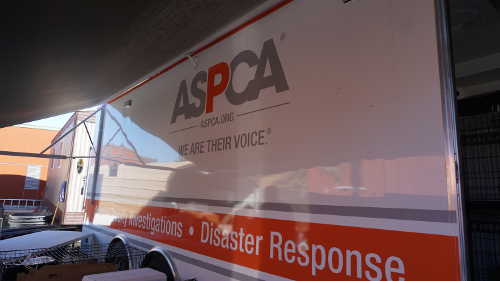
In addition, Davidson said Sonoma County Animal Control came in on a mutual aid request, and the North Valley Animal Disaster Group, which had helped during the Rocky fire, also returned to assist.
At the same time, Wine Country Animal Lovers, or WCAL, hit the ground to help with the effort.
On the night the fire broke out, Ingalls said she and another board member headed over to the Napa County Fairgrounds in Calistoga – where a Red Cross evacuation shelter was set up – with pet food and other supplies. They ended up staying until 3 a.m. as they helped evacuees arriving with pets.
WCAL also was one of three organizations – along with the Milo Foundation and Copper's Dream Rescue – that Davidson said took animals out of Lake County Animal Care and Control's shelter to make way for evacuee animals.
Ingalls said her organization was founded in 2009 and became active in 2012, at which time it began to pull animals from Lake County Animal Care and Control and into its own rescue.
Although the organization normally has up to 10 dogs and 10 cats in its rescue, it arranged to take 49 animals out of Lake County Animal Care and Control as a result of the Rocky fire, she said.
On the morning after the Valley fire broke out, she said two “very tenacious” WCAL volunteers showed up to ask how they could help, and they responded to Lake County Animal Care and Control to retrieve 18 animals that have since been placed in foster homes. By that point, she said another 10 dogs and all of the cats had been taken to rescue in Ukiah.
Over the next week, WCAL – joined by groups including Petaluma Animal Services, Sonoma Humane Society and Jameson Animal Rescue Ranch – worked around the clock to offer assistance to evacuees and their pets and to gather donations, she said. Jameson Animal Rescue Ranch also delivered feed for livestock.
A clinic set up at the Napa County Fairgrounds offered vaccinations, nail trims, dog washes and microchips, and Ingalls said during that time they handed out 150 no-cost spay/neuter certificates. Animals with more extensive veterinary needs were sent to the nearby Calistoga Vet Clinic.
Ingalls estimated that at the high point there were 400 animals at the fairgrounds along with their owners.
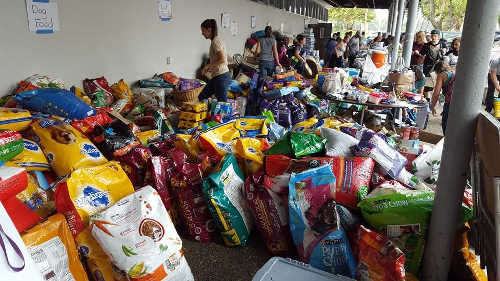
She said the various animal rescue groups also delivered supplies to evacuation sites in Lake County, with UC Davis arranging for water tankers to take water to horses that were being sheltered in place.
“We've been just amazed,” Ingalls said of the assistance that has come into the county as a result of the fire, adding she was touched by how much people appreciated the help they received, noting that even in the midst of the tragedy they had an impressive spirit.
She said WCAL has raised about $140,000 to help cover the costs incurred by the many vet clinics around the region – including UC Davis, Middletown Animal Hospital, Santa Rosa PetCare, Clearlake Veterinary Clinic, Wasson Memorial and many others – treating injured animals. Many medical supplies also have been donated.
“I think we were all very grateful that we were able to help, but we hope that it is never needed again,” Ingalls said.
Green said the ASPCA has created a network of animal rescue organizations across Northern California that is able to quickly respond to disasters.
Among those responding as part of that network was the Marin Humane Society, which provided support in the field as well as microchip donations.
“They were an incredibly valuable resource,” Green said.
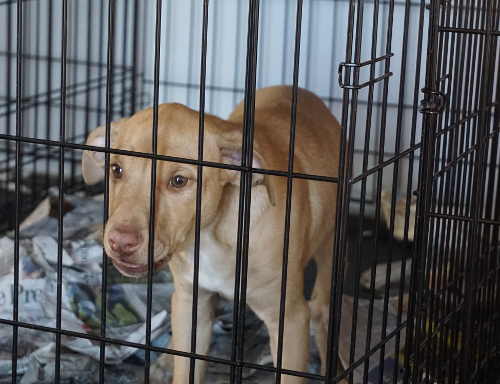
“We got on it right away,” said Lisa Bloch of Marin Humane, explaining that they networked to help free up space at impacted shelters, donated 100 microchips to use for animals that were being reunited with their families.
She said their staff also went out with the teams to feed and water animals being sheltered in place, with staff also cleaning cage at the shelter.
Nancy McKenney, Marin Humane's CEO, said the group also had a presence at the Local Assistance Center in Middletown. The very first clients to come in were looking for a cat who Marin Humane staff remembered caring for. There were able to subsequently go out, get pictures of the cat to show the owners it was safe, and place food and water for it.
“It was great. There were tears,” said McKenney.
McKenney said Marin Humane also collected donations to assist with the animal rescue effort, collecting not just supplies but, at last count, more than $15,000.
“Financially we want to help,” she said.
Initially, the ASPCA started out by taking in overflow animals and housing them in the large fifth-wheel disaster trailer located at Lake County Animal Care and Control's Lakeport facility.
Davidson said at that point more than 200 animals were in the shelter facility. He said every space and cage inside and outside of the shelter was filled as they worked to accommodate the animals.
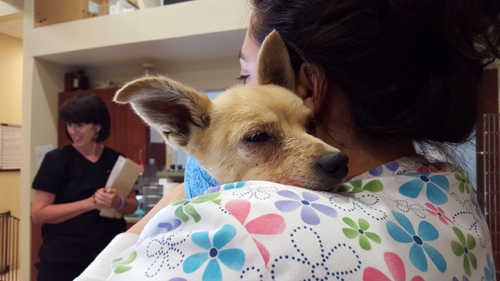
Green said the ASPCA later expanded its assistance by going into the field to help with livestock and animals that either needed to be removed or sheltered in place in Cobb, Hidden Valley Lake and Middletown.
“It was incredibly busy,” he said.
Both Davidson and Green explained that, when possible, if animals could be safely left in their homes, they would be sheltered in place.
In such cases, if the animals were uninjured and there were homes or other structures standing and in safe condition, the animals would remain there, with teams returning every two days to feed and water them. Davidson said they would leave messages at the properties explaining what actions they were taking to care for the animals.
“We will always prefer that option,” Green said of sheltering in place, explaining that animals do much better in their own homes than in shelters, and by staying put there is a better chance of them being reunited with their families.
In one case, a yard full of chickens, ducks and three small pigs were kept in place safely for two weeks until the owners informed officials that they were not going to be able to return home there, so the animals ultimately were removed, Green said.
However, Green and Davidson reported that in some instances, animals they had on food and watering programs would be removed by other individuals.
“We would come back and the animal was no longer there,” said Green.
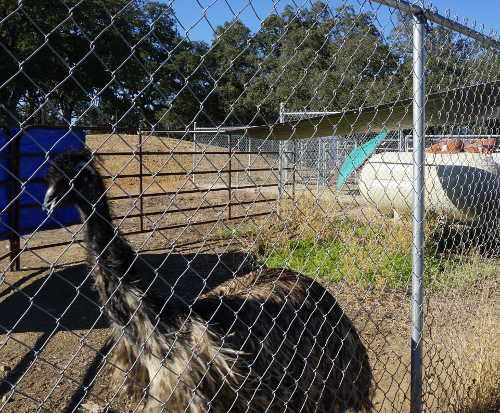
In some cases, Davidson said doors or windows were forced open to remove animals that had been sheltered in place.
Green attributed those actions to “well-intentioned groups” coming into the county that don't know the operational protocols. “That's an unfortunate part.”
He said this is the first time in some time that he has seen a situation in which so many organizations were operating independently, although he said it has happened before, citing the example of Hurricane Katrina.
The Valley fire, he said, was a unique situation, with a lot of media attention and a significant need for resources, which he suggested contributed to the situation.
At one point, Davidson said it was brought to his attention by sheriff's officials that other groups had been operating in the fire area – groups that hadn't cleared their activities either with him or with the Lake County Emergency Operations Center.
That led to what Davidson acknowledged was a heated phone call between him and the head of Petaluma Animal Services, during which he said he told the group to leave. The situation later was worked out with the organization, with Davidson informing them of the county's safety protocol as part of allowing them to continue working in the county.
Ingalls attributed the situation to lack of communication, noting that the matter settled down pretty quickly. “It got bad before it got good,” she said, adding, “I think they're now working very well together.”
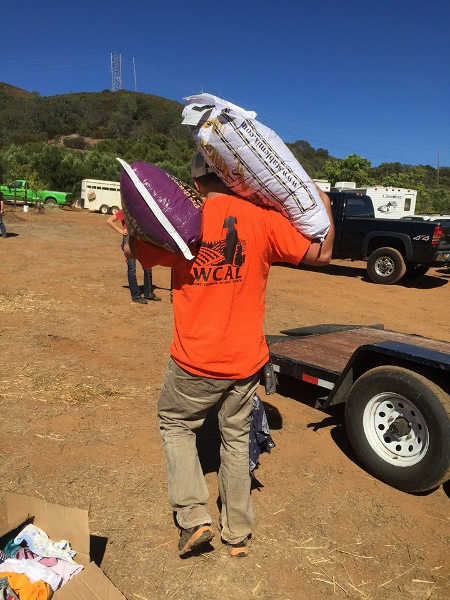
However, Davidson said issues continued with other people and entities, explaining that there were reports of people who were not part of LEAP using LEAP-type stickers on their vehicles to gain access to the fire area.
Davidson, recounting the tragic circumstances for so many animals, said, “A lot of animals perished. There's no way around that.”
However, in the midst of the struggles, a great deal of tragedy and what seemed like endless hours of hard work, there were little miracles.
A lot of animals found ways to survive the inferno, he said, describing cases in which cats climbed into drain pipes or under homes to ride out the firestorm.
One night about a week and a half into the fire, Davidson and Dr. Richard Bachman, the county's contract veterinarian, responded to the area near Hoberg's on the report of an injured kitten.
When they arrived, Davidson said he and Bachman encountered about 40 firefighters crowded around the burned kitten, who they found in the debris.
Davidson said the kitten survived and is undergoing treatment for its injuries.
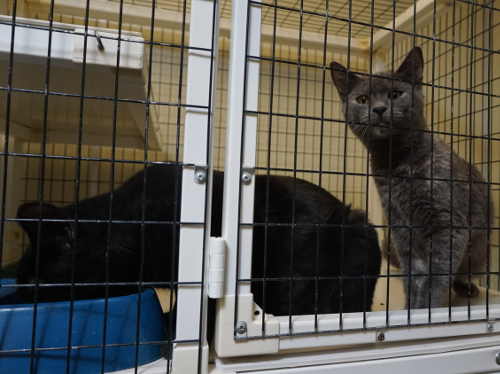
Plans for the future
While the work to care for the Valley fire's animals is now winding down – with Animal Care and Control now resuming normal operations – the organizations that were integral to the response are now envisioning what they can do to assist in the recovery, and in the work of creating a brighter future for Lake County's animals.
Ingalls said the fire is bringing the animal-related needs – and Lake County's demographic and economic challenges – to the forefront for many people not from the area.
“People love their animals up there, clearly,” she said.
Ingalls said WCAL wants to have a bigger footprint and offer more help to Lake County. As part of that effort, this year they're buying a transport van specifically to be able to take more animals out of Lake County's shelter and into rescue.
One of her goals is to help build a robust spay-neuter program in the county, which will require continuing to bring in more resources to support local animals.
She said her group also is hoping to start a pet food pantry in collaboration with groups like Orphan Dog Rescue, formerly known as Lake County Animal Services.
“I think good is coming out of this very horrific situation as far as the future,” she said.
Green said the ASPCA and the county are considering a mutual aid agreement similar to the ones the organization has with Lake's surrounding counties. “It only makes sense to include them.”
He said the Valley fire showed how such an agreement would work, identifying the response and what it would look like. The agreements in place with other jurisdictions created a network from which help was able to be drawn quickly.
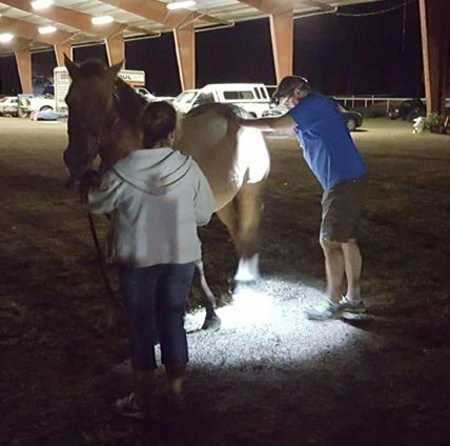
Green said he's also working to identify potential funding opportunities to support Lake County's needs now and into the future.
He said the ASPCA's personnel have gone home now, but resources like the disaster response trailer remain, and they will plan to remain involved in one way or another until they're told they are no longer needed.
Green said Lake County Animal Care and Control and LEAP have shown in the three wildland fires that they have come a long way and can handle the big incidents.
He suggested that with improved collaboration and communication, more community support and preparation, future responses would be even better.
“I think Lake County can handle just about anything that Mother Nature throws at them,” Green said.
Davidson said his agency already is looking ahead to future challenges, including concerns of flooding this winter if a prediction of heavy winter rains holds true.
He said ASPCA is assisting Animal Care and Control with its planning and preparation in the case of winter flooding.
Email Elizabeth Larson at This email address is being protected from spambots. You need JavaScript enabled to view it. . Follow her on Twitter, @ERLarson, or Lake County News, @LakeCoNews.
